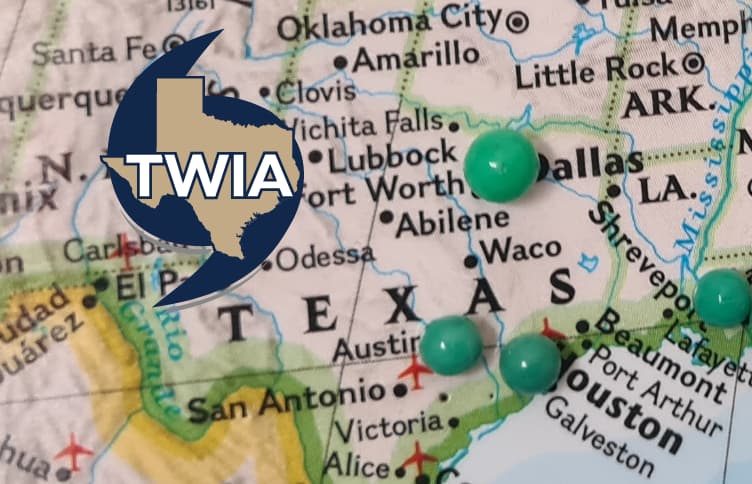The Texas Windstorm Insurance Association (TWIA) is now projecting that the amount of reinsurance and catastrophe bonds it may require for the 2026 wind season could be roughly 46% lower than this year’s program, with $2.3 billion of limit the current forecast.
In our last article we detailed some of the discussions of the Board of the Texas Windstorm Insurance Association (TWIA) at its last meeting, in which they discussed the evolution of the property insurer of last resort’s funding under new state legislation, concluding that it may result in TWIA opting to reset and perhaps even redeem early some of its catastrophe bonds.
Now, in documents prepared for another Board meeting next week, a presentation shows the meaningful reduction in risk transfer limit that TWIA could now purchase at its 2026 reinsurance renewals.
For the current year, 2025, TWIA’s 1-in-100 year probable maximum loss funding level was set at $6.227 billion, using a blend of catastrophe risk models, set as 50% Aon’s Impact Forecasting, 25% Moody’s RMS, and 25% CoreLogic’s RQE.
That meant, after other statutory funding sources, TWIA required roughly $4.227 billion of reinsurance in-force for the 2025 hurricane season, including its catastrophe bonds that remained in-force.
At this time, TWIA has a significant $2.45 billion of catastrophe bonds in-force and the property insurer for Texas has $1.777 billion of traditional reinsurance to sit alongside that in its risk transfer tower for the current year.
The current projection for minimum required funding, under the PML metric, is for it to drop to $4.5 billion for 2026, the meeting documents show.
With still $2 billion of statutory funding expected to be available and an estimated $200 million in the replenished Catastrophe Reserve Trust Fund (CRTF), it means the reinsurance and cat bond need for 2026 could be just $2.3 billion.
So that represents a 46% decline in reinsurance and catastrophe bond limit expected to be required for TWIA to meet its statutory funding obligations at next year’s renewals of the tower, a meaningful decrease.
In premiums ceded terms, those could decline by an estimated 43% to $237 million, from the $417 million estimate for the current year.
As we explained in our article back in August, $900 million of TWIA’s in-force cat bond protection, across two tranches of Alamo Re notes, is scheduled to mature in early June 2026.
Which means, for its funding purposes next year, TWIA will have $1.55 billion of in-force cat bond backed reinsurance available.
But as the Board discussed in the last meeting, some of those catastrophe bonds extend their coverage right up to the 1-in-100 year probable maximum loss level in TWIA’s funding and reinsurance tower and under a 1-in-50 year scenario they may not be required and may not be able to be reset low enough to be maintained through 2026.
Which leads to the prospects of possible early redemptions of some of the catastrophe bonds, if that indeed turns out to be the case. It will depend how flexible their reset terms and conditions are.
Meaning, at this stage, it is uncertain how TWIA’s 2026 reinsurance and cat bond program will be divided up.
Also uncertain is whether the Board could opt to buy reinsurance to a higher-level, or use a different blend of catastrophe risk models, which could lift the risk transfer funding requirements higher than the $2.3 billion.
Those decisions are typically not taken until Board meetings in the renewal year. So we won’t know the answer to how much in the way of catastrophe bonds versus reinsurance TWIA will buy or renew for 2026 until next year.
TWIA has been directly sponsoring catastrophe bonds since 2014 and remains one of the largest sponsors in our cat bond market sponsor leaderboard.

